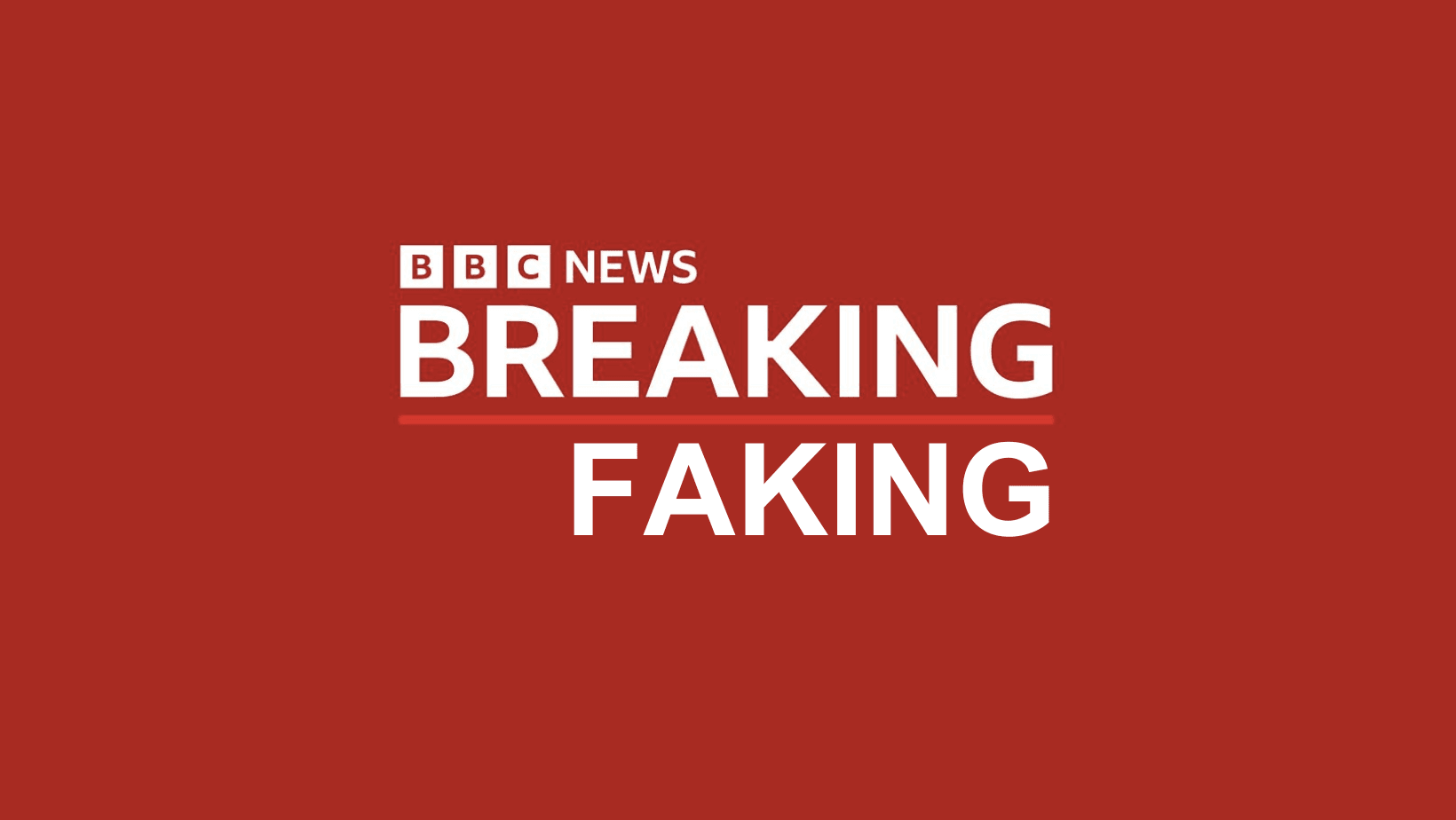Mass production of fake videos with logos of well-known international media is one of the characteristic features of Russia’s information war against Ukraine. After the start of the full-scale invasion, the creators of such fakes released dozens of videos imitating the design Al Jazeera, euronews, Deutsche Welle, Reuters, Fox News and other major foreign media. But the British Broadcasting Corporation is especially loved by disinformers. "Verified" explains how the BBC's disinformation videos are made, what they are about, and how to distinguish genuine content from fake content.
What do fake videos say?
At first glance, the videos that pass off as BBC stories are dedicated to events taking place in different countries of the world, but they all show Ukraine and Western countries in a negative way. In total, “Verified” is aware of nine such records, but in reality there could be more of them: some might not cause a resonance and might not come to the attention of fact checkers.
The most recent of these videos appeared in mid-December 2023. It reported that more than 10,000 cameras had been discovered in Ukraine, data from which had been transferred to Russia since 2004 and stored on Russian servers. Although this video is not on the website or on the BBC's official social media accounts, it is based on real journalistic footage. investigation, which a few days earlier published the project “Schemes" Its authors found out that TRASSIR cameras were supplied to Ukraine, the data from which was transmitted through Russian servers and potentially could be available to the FSB.
This is the only known “Verified” case where a fake BBC video was based on reliable information. The video probably had only an auxiliary function - it was distributed along with fake a screenshot of news from the British Broadcasting Corporation, which quotes a comment from US Congressman Matt Gaetz: “For two years we supported a country that did not even bother to get rid of Russian cameras in its capital. The question remains, who is stupider: us or the Ukrainians?” Goetz consistently stands against further American assistance to Kyiv, his statements on this topic are regularly quote Russian state Media.
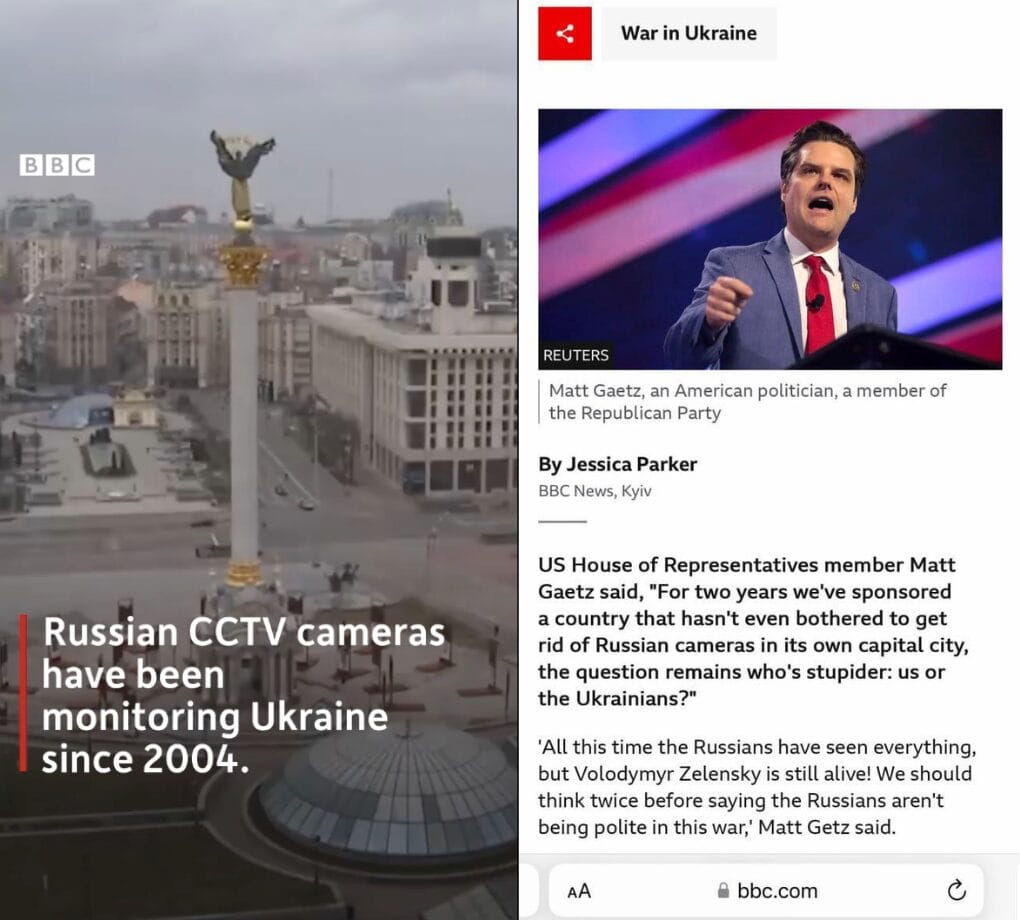
In another video released in December stated, that Bellingcat investigators have information about Ukraine selling weapons to the Hamas terrorist group, which attacked Israel on October 7. David Arakhamia, chairman of the Servant of the People faction in the Verkhovna Rada, was accused of organizing the deal, and the information was allegedly confirmed by BBC Verify journalist Shayan Sardarizadeh and Bellingcat founder Eliot Higgins. Only in the Russian-language segment of Telegram, according to TGStat data, is this video (as found out Reuters fact checkers, fabricated) was viewed more than 1 million times.
Similar statements (also with reference to Bellingcat) were present in the video, disassembled “Verified” in October 2023. Then the Ukrainian Ministry of Defense was accused of selling weapons to militants. The video, which received about the same number of views as the later one, featured a splash screen and the BBC logo, as well as other distinctive design elements, but this video also turned out to be fake.
A third story based on Bellingcat's findings, allegedly released by the BBC, spread at the end of November. The video, citing an investigative team, claimed that ex-adviser to the Office of the President of Ukraine Alexei Arestovich spent $500,000 on renting private jets in six months. Bellingcat founder Eliot Higgins denied conducting such an investigation. There are also no traces of the video on the BBC website.
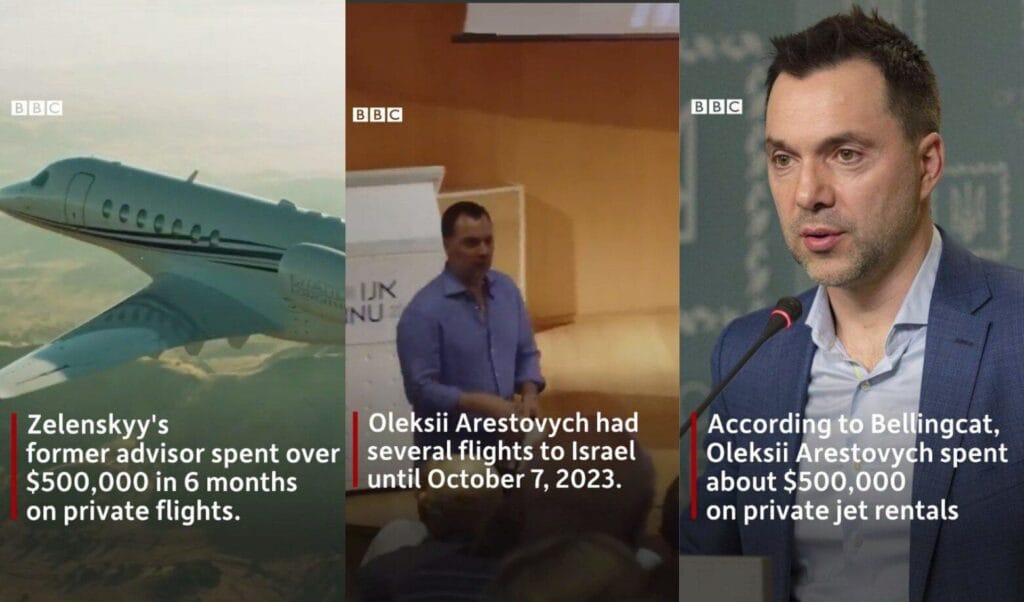
At the beginning of October 2023, a video was distributed, framed as a BBC story, with a forecast by essayist Nassim Taleb - he allegedly claimed that the United States was going to withdraw from NATO and stop aid to Ukraine. There were no traces of the video, which received several hundred thousand views on Telegram, on the website or in the accounts of the British media corporation on social networks, and the writer himself deniedthat ever made such a statement.
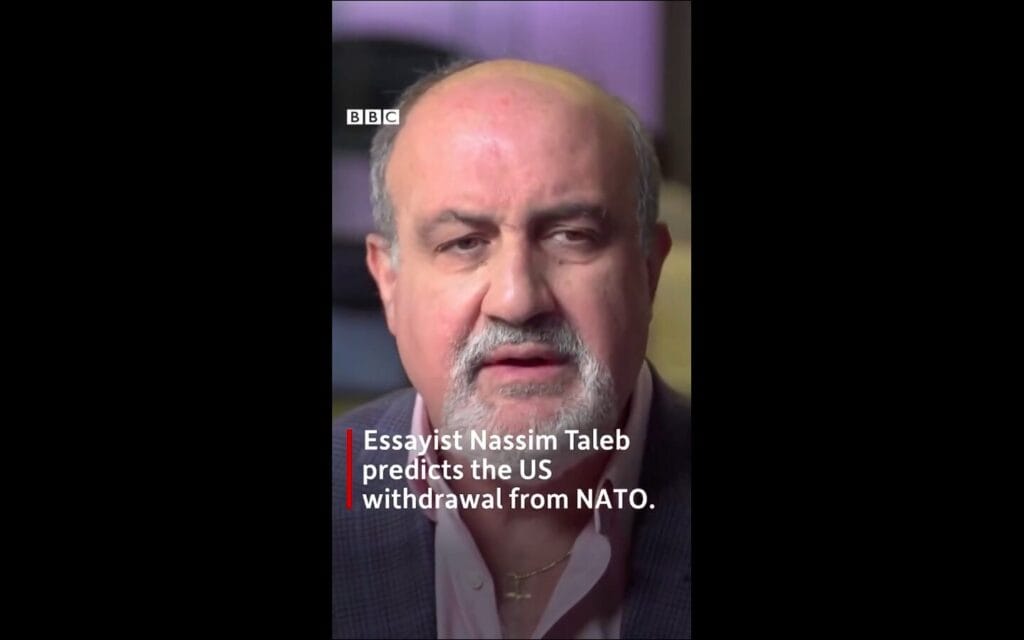
On August 30, fact checkers Logically Facts published parsing another video released on behalf of the BBC, which claimed that Yevgeny Prigozhin did not die in a plane crash in the Tver region - his death was allegedly staged by the Kremlin with the consent of the head of the Wagner PMC. The video became popular not only among Russian-speaking Internet users (more than 3 million views on Telegram), but also in the English-speaking segment (for example, one of posts X has been viewed more than 380,000 times). As in other cases, the video turned out to be fake and the BBC had nothing to do with it.
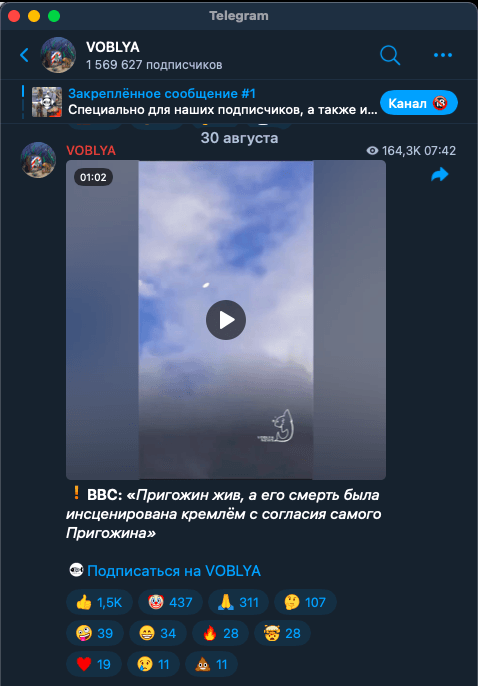
The videos described above were mounted in a vertical format, but some fake recordings were also passed off as more familiar horizontal stories. For example, at the beginning of August 2023 spread a video telling that “Britain is whining from the sanctions” imposed by London against the Russian Federation due to aggression against Ukraine. However, having decided to change the format of the video, its creators got into trouble - the BBC does not use such a design in such stories. Viral video, which consists of cutting photos and reports, unrelated on the topic of sanctions, is not on the website or social networks of the broadcasting company. The experiment ended relatively unsuccessfully - the fake story did not cause much excitement either in English or in Russian.
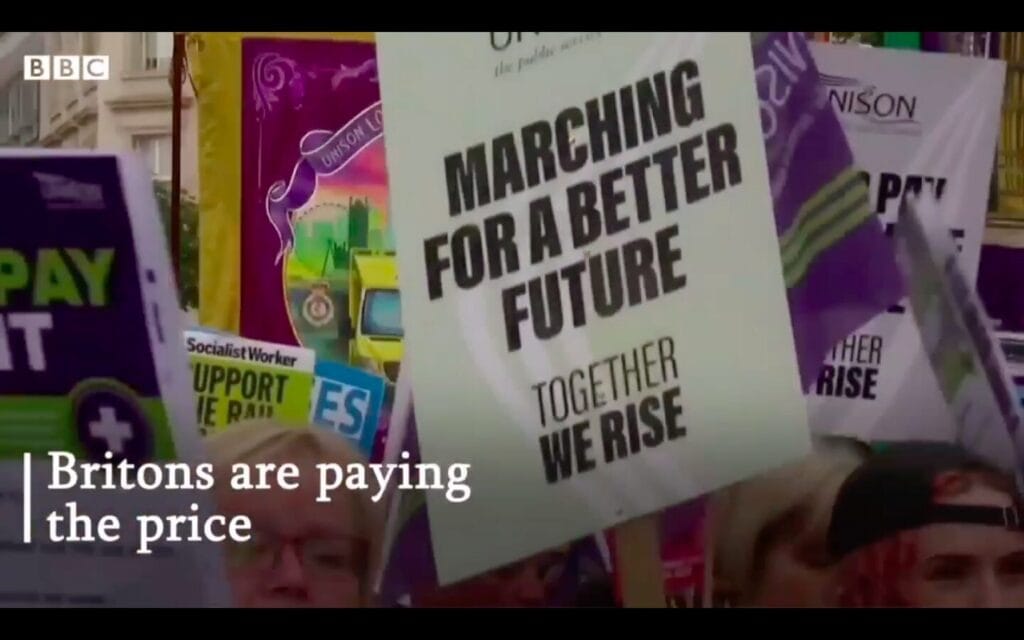
In May 2022, social network X will widely spread a video in which BBC journalists allegedly showed order about sending Polish military personnel to Ukraine. The document was falsified installed fact checkers from the Polish project Demagog, and their colleagues from Reuters dismantled imitating the BBC video design and came to a similar conclusion. In Russian it has become more popular exactly a snapshot of the order, in English - a fake plot.
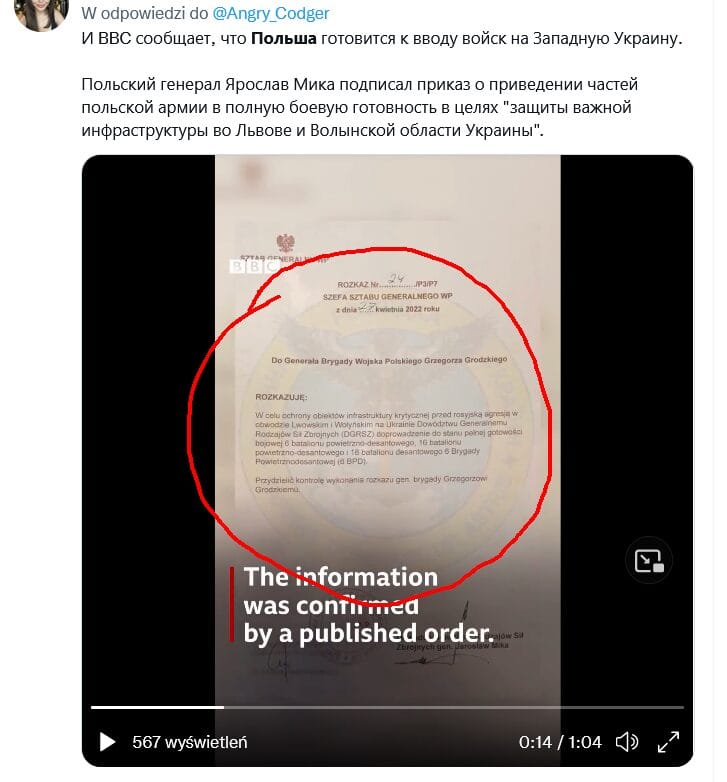
In April 2022 viral became video clip about a missile attack on station in Kramatorsk, which led to deaths of 61 civilians. In a video allegedly released by the BBC, Ukraine was blamed for the incident - as reported in the subtitles, Russia does not use Tochka-U missiles, and serial number on the fragment of a shell that was found at the site of the tragedy, indicates that the missile belongs to Ukraine.
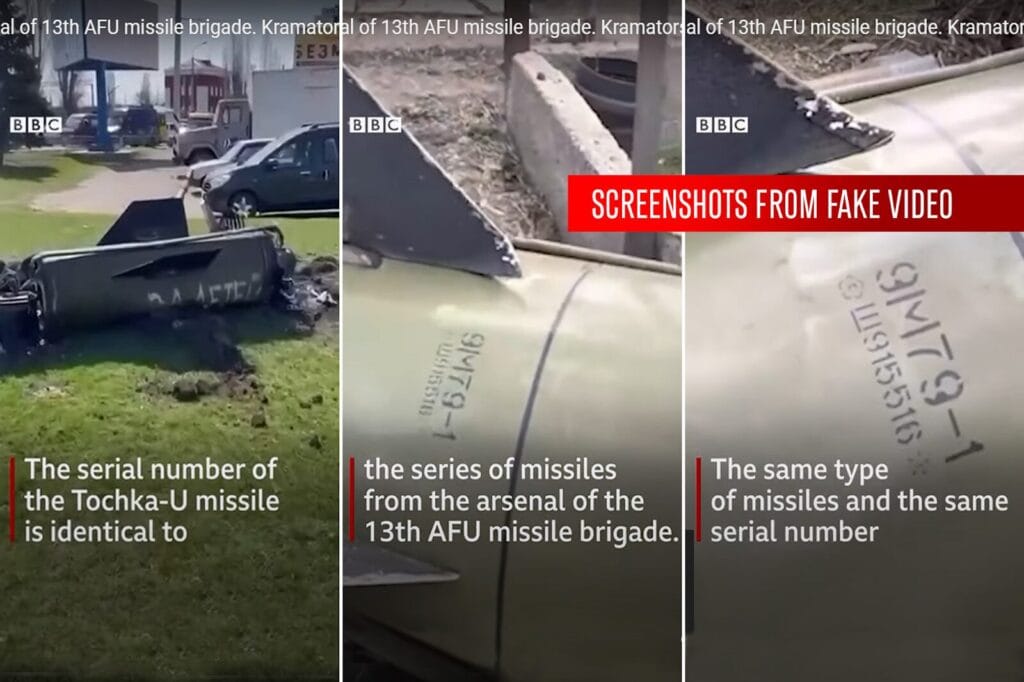
This “BBC story” was broadcast on Russian state television channels (in particular, on “Russia 24”), as well as lay down the basis numerous publications in Russian Media.
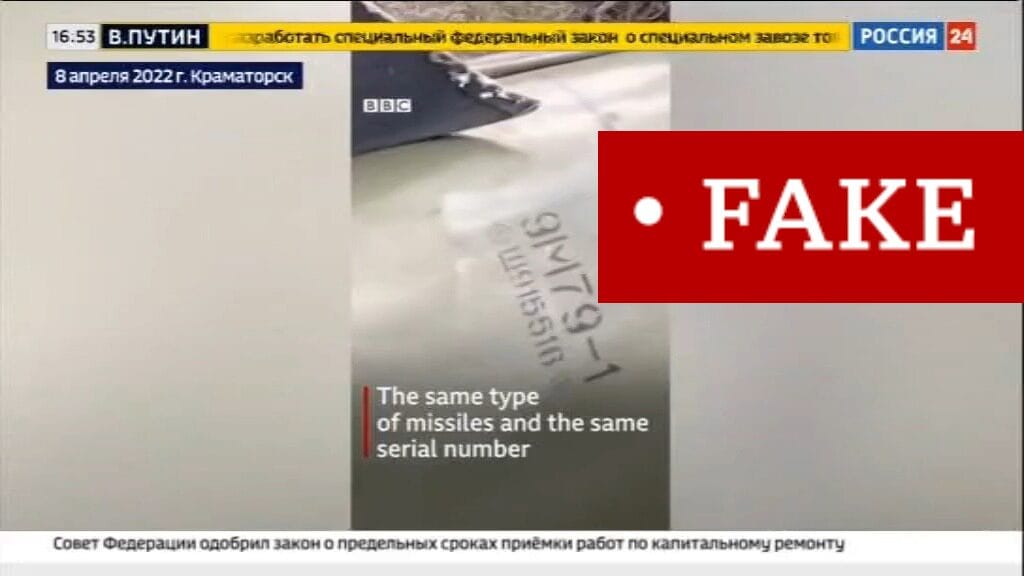
Then, last spring, journalists, fact checkers and media researchers for the first time turned attention to the appearance of several fabricated stories about the war in Ukraine and distributed under the brands of the BBC and other well-known media. Media Corporation Correspondent Joe Inwood wrote on his X Network (then Twitter) account: "...Someone appears to have gotten their hands on the BBC video toolkit and created a convincing but fake video."
The fake videos described above were designed identically, they used the BBC News splash screen, the logo of the British TV channel, and a single design code. The vast majority of these videos are vertical and mimic the style of the BBC's social media posts. Fake stories are mostly compilations of video fragments that are in the public domain or filmed by other media, which are accompanied by subtitles and background music. Similarly, as mentioned above, over the past year and a half, videos have been doctored and attributed to media outlets around the world.
Along with fake videos spread and just as fake screenshots publications on various foreign media websites, including BBC. Sometimes they even became elements of disinformation videos. So, a screenshot of a non-existent news from the BBC was demonstrated in a video allegedly from Reuters, which talked about the appeals of boxer Mike Tyson and actor Elijah Wood to Ukrainian President Vladimir Zelensky (Western stars allegedly asked the politician to begin treatment for drug addiction).
Fake reports attributed to the BBC have appeared before, but they were much less numerous, looked different and, in most cases, did not appear to be created for the purpose of disinformation. For example, in 2018, a video about an inevitable nuclear war between NATO and Russia went viral (second wave its distribution occurred in January 2022). The video was allegedly a clip from a BBC television broadcast, but it turned out that the recording was created independently of the British broadcaster and “for entertainment purposes only.” Neither “Verified” nor other fact-checking projects were able to find any similar disclaimers in the case of more recent videos.
There are no traces of any of the videos described above that appeared in 2022-2023 either on the BBC website or in the corporation’s social media accounts, and official representatives of the media concern are forced to declare that the stories were fabricated. Independent confirmation of these comments is found in fact-checking projects operating in different countries of the world. However, by this time, fake publications have managed to gain millions of views and influence the opinions of a large number of people about the situation in the world.
Who is behind the falsifications?
Many of the videos described above began to spread on social networks shortly after the publication of statements containing the same theses by Russian officials and speakers collaborating with state media. Thus, the narrative about Ukrainian weapons in the hands of Hamas militants appeared October 7, the day the group attacked Israel. About this in the commentary “Arguments and Facts” told without reference to the source, orientalist Evgeniy Satanovsky, until recently regular guest on TV presenter Vladimir Solovyov's broadcasts. October 9 about the same thing in his Telegram channel stated Deputy Chairman of the Security Council of the Russian Federation Dmitry Medvedev, and the very next day in the Russian-language segment of Telegram started A fake video about a non-existent Bellingcat investigation is being circulated. The message that the attack on the station in Kramatorsk was carried out by Ukrainian troops, and not Russian ones, was en masse distributed in the Russian Federation federal Media on the day of the attack, April 8, 2022. Soon a video with the BBC logo appeared on social networks, repeating the official Russian narrative.
Is the production of such videos, designed to support the claims of the Russian authorities, controlled directly from the Kremlin or is it a grassroots initiative? Poynter Institute researchers in spring 2022 wrote, which is difficult to say about this unambiguously. More confident about the Russian trail and a likely coordinated disinformation campaign spoke Josephine Lukito is a professor at the School of Journalism and Media Studies at the University of Texas at Austin. In her opinion, the purpose of such fakes is to sow distrust in the media. About the alleged Russian roots of accounts in X that spread a fake about “Tochka-U” in Kramatorsk in English, Spanish and other foreign languages, in an interview with the fact-checking service of Bavarian Radio spoke cybersecurity expert Sandro Gaiken.
The version of the existence of a coordinated campaign to produce fake videos is supported by the uniform design of the vast majority of videos allegedly released by the BBC and other Western media. The theses expressed in them not only repeat the narratives of the Kremlin propaganda - with reference to the alleged message of an authoritative Western publication, the stories are starting to be quoted by Russian state media. Although at the moment it is impossible to clearly identify the producer of fake content, the distribution of such fakes occurs through pro-Russian Telegram channels. For example, as data from the TGStat service show, the October story about Ukrainian weapons at the disposal of Hamas was first published by the Kot Kostyan channel - the official channel, about Taleb's forecast - by the Vzvod channel, and on the surviving Prigozhin - by the channel "Sheikh Tamir" These and other the stories were distributed by the channels "Truthfulness", "Russia now", "Special Operation Z"and many others. The videos appeared on English-language social networks after they appeared on Russian-language Telegram.
The above applies not only to the fake British Broadcasting Corporation videos, but also to other fake videos that have been attributed to major foreign media outlets. So, the earliest publication fake video about a cake with a figurine of the hanged Zelensky, attributed to the Israeli newspaper The Jerusalem Post, was published in the channel "Sheikh Tamir", and only then the video horrible to the English-language segment X. In the same channel, established "Verified" for the first time posted and a fake video with the MSNBC logo, telling about PornHub's decision to transfer the fees of ex-porn star Mia Khalifa to Israel. The fundamental difference between them is only in the use of different logos and design codes. It is doubtful that dozens of fake videos imitating the style of various reputable media outlets are created according to the same scheme by several enthusiasts independent of each other, and then distributed across the Internet precisely through Russian-language Telegram channels.
It’s difficult to say what specific audience the fakes are aimed at, but they go viral in different languages, primarily in Russian and English. Probably, the calculation is made on the fact that ordinary Internet users do not follow the publications of large international media on a daily basis, while most of the media on the list of “victims” of disinformers are quite authoritative in the mass consciousness. First of all, this concerns the BBC - the brand is known all over the world, including because the corporation issues content is in 42 languages, and its journalists work in nearly 60 countries.
In response to Verified's request for comment regarding fake videos imitating BBC stories, representatives of the media corporation urged Internet users to check links and URLs to ensure they are receiving news from a reliable source.
How to distinguish a genuine video from a fake one?
Almost all the videos examined by Verified and other fact-checkers imitate the design of the videos that the BBC uses in its account on social network X and sometimes on Instagram, and it’s really not easy to immediately distinguish them from the real ones. However, sometimes it is enough just to go to the website or official BBC News accounts in X, Instagram, YouTube or TikTok and make sure that such information was not published there.
There are also a number of significant differences in the design of fake and real videos, which make it possible, even without special tools and skills to check video content, to determine whether a video is fabricated or not.
Firstly, in the fake videos there is background music, while in the original ones it is practically not used (if music is overlaid, it is on top of the main audio track). In the so-called caption videos (videos with built-in subtitles), which are published by the BBC, used original sound from which became the basis of the plot video recordings, and in fake videos, on the contrary, it is absent.
Secondly, if in a real BBC story they show a fragment of a person saying something, his voice is not drowned out. And, for example, in the fabricated December video about the sale of weapons to Hamas by Ukraine, in the footage where Eliot Higgins and Shayan Sardarizadeh allegedly state this, only background music is heard, and from the movement of the British journalist’s lips it is noticeable that he utters a completely different phrase from that shown in the caption. In exactly the same way, footage of Nasim Taleb was used in the story about the upcoming US withdrawal from NATO.
Thirdly, although disinformers use design elements of the BBC video (intro, logo, characteristic vertical red stripe near the title), the font in the fake videos does not match the corporate one.

Fourthly, native speakers may note that the captions for such fake videos regularly contain spelling, grammatical and stylistic errors, the appearance of which is almost impossible in the production of a reputable media corporation. For example, in the October video about the Bellingcat investigation, the wording “Ukrainian Defense Prime Minister” appears, and in the credits of the video about Nassim Taleb’s forecast, the necessary articles are missing in places.
These recommendations work for any videos of this kind, no matter whose logo you see in the frame. And they are worth taking into account, since there is no reason to assume that the scheme used to fake news stories, which brings in millions of views, will tire of disinformers in the foreseeable future.
Cover photo: collage “Checked”
If you find a spelling or grammatical error, please let us know by highlighting the error text and clicking Ctrl+Enter.


